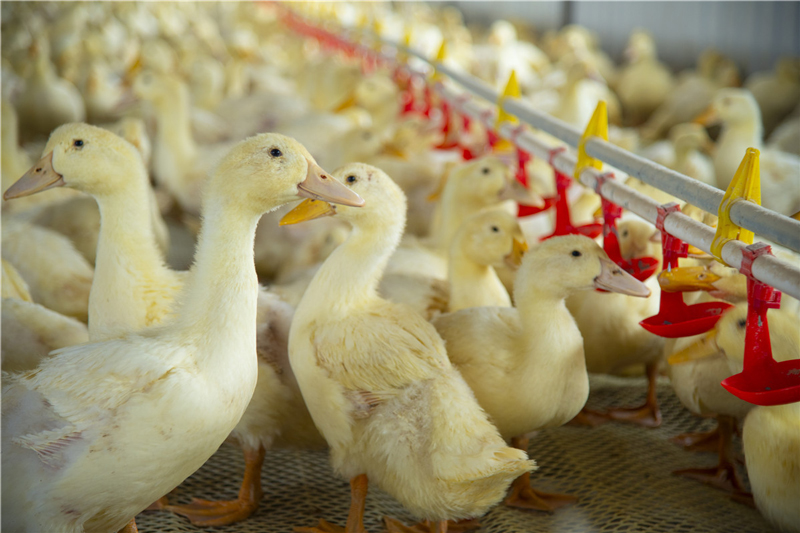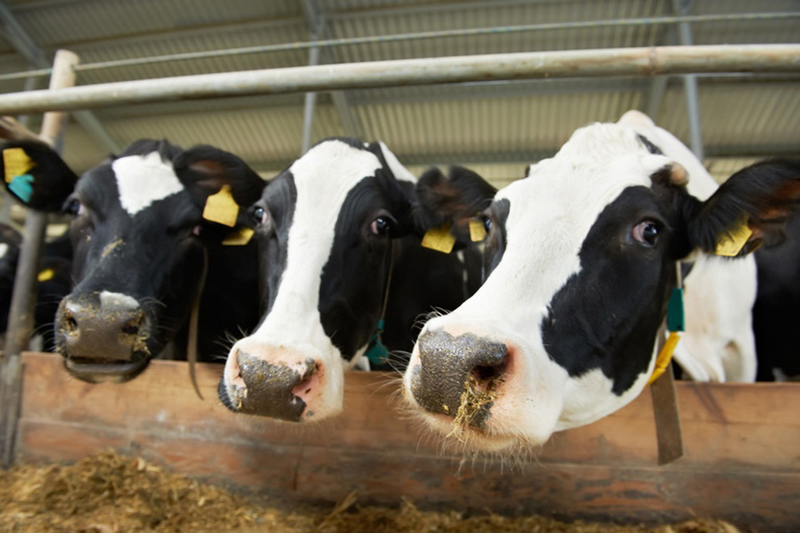CHLOIRNE DIOXIDE (ClO2) FOR POUTRY & LIVE STOCK DISINFECTION
Biofilm Problem in livestock Farms
In poultry & live stock feeding, water system can be plagued by biofilm. 95% of all microorganisms are hiding in the biofilm. Slime grows very quickly in water systems. Bacterial infection can build up in water tanks pipework and drinking troughs, leading to poor water quality and damage flock health. Removal of the biofilm is crucial for securing persistent microbiological control of poultry & live stock using water. Poor quality water leads to prevalence of disease in the herd, and is proven to have a negative effect on milk and meat yields. Access to clean water is vital for profitable animal rearing and milk production.


The following features and benefits make chlorine dioxide the best disinfectant choice for poultry&livestock. Using YEARUP ClO2 product for animals raising can improve feed conversion and reduce mortality by targeting the most overlooked aspect of the bio-security chain in water supply.
- ClO2 can removes all biofilm from water distribution systems(from water tank to pipelines) without unwanted, harmful by-products, such as carcinogenic and toxic compounds.
- ClO2 does not corrode aluminum, carbon steel or stainless steel at concentrations below 100 ppm; This will save water system maintenance cost.
- ClO2 does not react with ammonia and most organic compounds.
- ClO2 is effective in removing iron and manganese compounds.
- ClO2 Destroys algae-related taste and odor compounds; this won’t affect water taste.
- YEARUP ClO2 has broad-spectrum bactericidal; It can kill all kinds of microorganisms including bacteria, viruses, protozoa, fungi, yeasts, and etc.
- No build-up of resistance by microorganisms.
- ClO2 keeps effective against airborne pathogens when “misted”.
- ClO2 works in wide PH; It is effective against all waterborne pathogens between pH 4-10.
- ClO2 using for water disinfection can reduced disease risks; lower to none E-Coli and Salmonella infections.
- ClO2 is very specific and enters into only a few side reactions when compared with chlorine, it does not chlorinate organics, therefore it does not form THMs.
ClO2 dose not react with water it stays as inert gas in water making it more soluble and more effective.
YEARUP ClO2 For Poultry & Livestock Disinfection
1gram tablet, 6tablets/strip,
1gram tablet, 100tablets/bottle
4gram tablet, 4tablets/strip
5gram tablet, single pouch
10gram tablet, single pouch
20gram tablet, single pouch

<Usage & Dosage>
Mother Liquid Preparation
Add 500g ClO2 tablet to 25kg water (DO NOT ADD WATER TO TABLET). We get 2000mg/L ClO2 solution. The mother liquid can be diluted and applied according to the following chart.
Or we can put tablet to certain amount of water for using. E.g. 20g tablet in 20L water is 100ppm.
|
Disinfection Object |
Concentration |
Usage |
| Drinking water |
1 |
Add the 1mg/L solution to water supply pipes |
| Water supply pipes |
100-200 |
Add 100-200mg/L solution to empty pipes, disinfect for 20 minutes and swill |
| Livestock Shelter disinfection and deodorization(floor, walls, feeding trough, utensil) |
100-200 |
Scrubbing or spraying |
| Hatchery and other appliance disinfection |
40 |
Spray to moist |
| Hatching egg Disinfection |
40 |
Soaking for 3 to 5 minutes |
| Chick housing disinfection |
70 |
Spray, dosage50g/m3,put into use after 1 to 2days |
| Milking workshop, storage facilities |
40 |
alkali washing-water washing-acid pickling, soaking in the solution for 20 minutes |
| Transport vehicle |
100 |
Spray or scrubbing |
| Livestock and poultry body surface disinfection |
20 |
Spray the surface to moist, once a week |
| Medical equipment and appliance disinfection |
30 |
Soaking for 30 minutes and swill by sterile water |
| Clinic area |
70 |
Spraying, dosage 50g/m3 |
| Epidemic Period | Dead bodies 500-1000 |
Spraying to disinfection and treat safely |
| Other fields disinfection, the dosage should be twice than usual disinfection | ||

